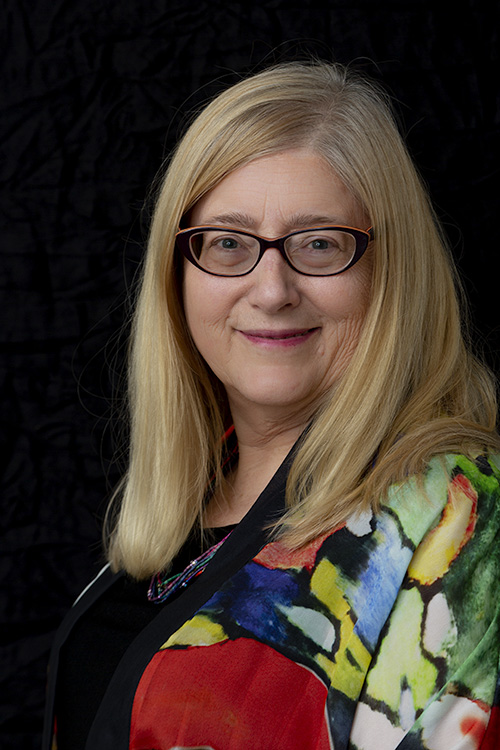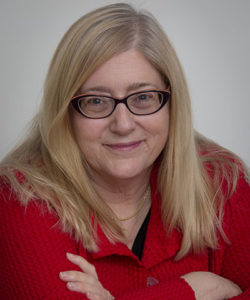Into Your Eighties Joining Hands Across Generations
In Part One of our series on Joining Hands Across Generations, forty-something Tera Johnson-Swartz (founder of Midlife_It) posed a question to sixty-something Stella, which Stella answered in Part Two. In this final part, Stella (the sixty-something) talks with Dr. Ruth Saxton, our eighty-something, about the importance of older women's stories.
Biography : In her long academic career, Dr. Ruth Saxton studied and taught about fiction by women, focusing on how story limits or expands what we imagine is possible. Dr. Saxton was the first Dean of Letters at Mills College and co-founded its Women’s Studies program. She has three children and three grandchildren and is the author of numerous scholarly works. In 2020, Saxton published The Book of Old Ladies, her first book for a general readership: an articulate and thoughtful analysis of the role of older women in fiction. Saxton guides us through a diverse group of thirty well-chosen novels and stories that feature older female characters. Saxton calls it “a curated conversation that challenges the limiting outcomes we seem to hold for aging women.”
Stella: In your marvelous book, you write, “Our society is unkind to aging people across the board. However, we allow for the possibility that old men may have richly complex interior lives, imagine them able to create art and have erotic potential… we do not see their sexuality as a punch line or imagine their personhood to be only in service to others.” How is ageism so different for women, and for women characters?
Ruth: In our culture, the emphasis on youth permeates everything and is too often internalized by all genders regarding what constitutes a good life. Relevance, the capacity for creativity or new beginnings, and ageism cut across a variety of social positions. For women and women characters, the focus on youth is pernicious. For example, cultural notions uphold the myth that women lose sexual desire when they are no longer capable of childbirth and that men maintain desire throughout their entire lives. Science and medicine counter those notions. But in addition to sex, people can experience desire and feel passion throughout their lives. Physical touch, companionship, joy in friendship are not limited to the young or to the conventionally beautiful, or to the conventional romance plot. Yet, advertising bombasts us with ways to prolong our youthful appearance, to hide all signs of aging. We are encouraged to buy lotions and creams to create the illusion of youthful skin and then urged to apply cosmetics not for a sense of play or self-definition, but to further blur the differences between our younger and older selves. All this distracts us from our actual lives.
Stella: You talk about the “Little Red Riding Hood” phenomenon, where the older woman is in the story, but her story doesn’t matter (she is “fodder for the wolf”). And you give other examples of stories ostensibly about older women that are really focused on their youthful romantic reminiscences (what you delightfully call “Deathbed Bookends). And do you see that evolution as the cause of a shift in the social narrative, the effect of that shift, or both?
Ruth: While women’s plots extend far beyond romance/marriage or death (creative work, career, friendship, motherhood, or other caregiving), romance for older women remains a sort of radical plot point. Older women’s bodies are often seen as outside the parameters of desire (as objects or subjects) and this is simply not true! We are beginning to see more women of a certain age as romantic protagonists in books and in television series such as “Frankie and Grace” and “Last Tango in Halifax.” But we do not yet have enough such stories of desire and love and passion in old women. And sadly, the fact that the woman is older is still almost always considered “remarkable,” by which I mean it is the thing people talk about in the story. Yet we see older men in romantic relationships (with women their age, or with younger women) in innumerable stories in books and films, and in lived experience. That older men have romantic lives is not considered at all remarkable.
The stories we consume, that we are fed, may undermine our sense of what is possible. One cannot parse cause and effect at all precisely with cultural shifts. That said, when we encounter nuanced thoughtful stories and presentations of older women characters, and when these women are given the complex pleasurable complicated romantic/intimate possibilities almost always afforded to older male characters, I believe it expands our imagined sense of possibilities. Sometimes that romance may be the focus of the story, sometimes a background beat, sometimes the romance is queer, sometimes straight, etc. And that expansion of imagination may expand the choices we understand as possible.
Stella: You’ve written that older women are more plentiful in detective fiction, where invisibility is an asset. I’m wondering in what other types of stories might invisibility be an asset?
Ruth: I think the capacity to observe, to be considered a sort of ordinary old lady that is not immediately of interest, can make for fascinating character-driven fiction. Of course, invisibility is valuable to a detective or spy or, as recent senior center heist novels show, to a thief! Invisibility of age, assumption of lack of acuity, being misread, is a useful plot point. A presumption of lack of intellect and / or a sort of “sweetness” or lack of threat is valuable to a Miss Marple or Mrs. Pollifax. In my book, I write about Leonora Carrington’s The Hearing Trumpet in which Marion Leatherby is able to eavesdrop on her son and his family because they dismiss her as incapable of discovering their secret plans to move her to a home for senile old ladies. Characters in private nursing homes such as May Sarton’s Caro in As We Are Now, and in homes for elderly men and women who have no welcoming family such as Elizabeth Taylor’s Mrs. Palfrey at the Claremont, and the elderly Swedish pensioners in Catharina Ingelman-Sundberg’s series of novels where the elderly can pull off heists because they are never seen as suspects, all have lives worth exploring. Older characters, often considered marginal in stories that focus on the young, have stories worthy of exploring from their point of view, a point of view that often has access to information not available to those society considers to be of note.
The 20th century writer Doris Lessing, in an interview with Cathleen Rountree published in On Women Turning 70 (1999), remarked on the importance of invisibility to a writer and commented on her own discovery of the value of the very invisibility she had so resented in her fifties, when she first experienced it as a loss of perceived sensuality because men no longer noticed her. Like her protagonist in The Summer Before the Dark, she could walk past a construction site unnoticed with none of the jeering whistles that irritated her as a young woman. She goes on to comment about the invisibility we experience “when we get really old,” and says it is “quite interesting not to be noticed, because you can listen very attentively.” What she considers tragic is not the invisibility, but that old people are no longer considered useful.
In my book, I call attention to the lives of old women who are the protagonists of fiction by women. My research began when I noticed that most of the old women in literature are marginal and that we seldom are aware of their current daily experiences, thoughts, dreams. In the introduction, I explain that “I wanted to get inside the heads of old women. I wanted to gather examples of good aging, of wise or surprising women over sixty and into their nineties, like beads on a string, a secular rosary to help fend off the fear of becoming elderly in a society where mainstream visions of aging women are marked by fear, loathing, refusal, or reduction.” I hope that my discussion of these stories will make you want to pick them up and begin your own search for models of aging that defy the restrictive plots that do not represent women’s true possibilities.
Stella: You also say “I hope The Book of Old Ladies inspires new fiction and leads to discovery of the novels I have not yet read.” In particular, you look forward to reading novels by a more diverse array of women authors that focus on older women protagonists. Do you have any new discoveries to share?
Ruth: While working on the book, I asked everyone I knew for suggestions of books I should include. When I asked my colleague and novelist Patricia Powell for recommendations of relevant novels by women of color, she realized all her protagonists were young women. I was delighted last spring when she reminded me of that conversation, and told me she completed a draft of a novel tentatively titled Balm Yard in which Dorothea, two years into retirement from a career in finance and seemingly happily married for thirty years, is undergoing massive changes in her sense of herself. She travels from the Bay Area of northern California to visit her 87-year-old mother in Jamaica, trying to figure out what’s going on. Powell met with my last course at Mills, a collaboration between Mills students and members of the Downtown Oakland Senior Center, allowing us to read a draft of the first chapter from her forthcoming novel, and we all look forward to its publication!
Since retirement I am leading online courses inspired by The Book of Old Ladies at the Oakland Senior Center. I will share some of the recent novels we have enjoyed that are not covered in my book.
- Sarah Ladipo Manyika’s slender novel Like a Mule Bringing Ice Cream to the Sun tells the story of Dr. Morayo da Silva, a retired English professor, approaching her 75th birthday. A letter from the DMV reminds her she needs to make an appointment to renew her license; someone has reported her driving as unsafe and that her vision is worsening. We quickly learn that she was born in Nigeria, has been married to a diplomat, and has lived in many countries before settling in San Francisco. Each of the novel’s twenty-one chapters is a first-person account by Morayo or someone she encounters in her neighborhood. We observe her love of color, beautiful African fabrics, and bright red lipstick, as well as her kindness, her curiosity, her love of books, and her delight in driving her Porsche Buttercup on San Francisco’s hills. Morayo is wonderful, wise, kind, and fearless.
- Isabel Allende’s The Japanese Lover tells the story of another San Francisco denizen, Alma Belasco, whose parents send her from Poland in 1939 to live in safety with relatives in an opulent San Francisco mansion where she meets Ichimei Fukuda, the son of the family’s gardener. As an old woman living in Lark House nursing home, Alma meets Irina, a caretaker who develops a friendship with Alma’s grandson, Seth, and along with the young people, the reader gradually learns about a secret passion that has existed for nearly seventy years. The Times book jacket blurb describes this lovely book as “a novel of high romance and lush sensuality, unashamedly about the enduring power of love and ending on a note of grace.”
For our next reading series, which begins in January, I invited members of the group to each submit up to five book suggestions. We are still compiling the final list but so far we plan to read Octavia Butler’s Kindred and Paula Marshall’s Praisesong for the Widow. We are considering expanding our readings beyond the parameters of my book to include novels in which the older woman is not the protagonist but is essential, such as the old women in many of Toni Morrison’s novels. We are also considering a course on old women in fairytales, folktales, and picture books for children, topics I initially researched, but omitted when I narrowed the scope of The Book of Old Ladies.
I am always looking for more books and encouraging women to write their untold stories. Stella, your recently published Brilliant Charming Bastard extends the ideas I explore in my “Sex After Sixty” chapter. Going beyond the books I include, you portray intelligent older women as sexy and risk-taking with erotic present tense scenes rather than vividly recalled memories. Your novel certainly counters stories I call “deathbed bookends” in which the book begins and ends with an old woman on her deathbed and packs all the sex into her remembered youth. I encourage you and your readers to send me recommendations!
Stella: You suffered a traumatic brain injury while writing The Book of Old Ladies, and you were misdiagnosed as simply having symptoms of age until you insisted on a full range of tests. How did that experience change your approach to writing this book?
Ruth: The more I read, the more I appreciate stories in which old ladies not only survive the huge losses of their lives, such as divorce, death of a spouse, serious illness, forced retirement, or alienation from adult children, but discover undeveloped parts of themselves, sometimes defy limiting conventions and habits that no longer serve them well. Stories of satisfying lives after loss lift my spirits and affirm what I have observed not only personally but also in life writing—in journals, diaries, biographies, and memoirs.
When I lost my brain as I had known it in a car accident in my early sixties, I wanted stories of development and hope to counter the dismal medical advice to quit my job and accept that I might not ever read or write again. I am not given to denial, but I do have a streak of defiance when faced with dire predictions. Rather than give up, I spent years of hard work—physical therapy, speech therapy, occupational therapy, vision therapy, psychotherapy, acupuncture, Pilates—while impersonating my former self at home and at work. When my reading improved from its second-grade level, I returned to my original project knowing first-hand the importance of hope and reinvention after loss. I am committed not to regaining a lost “whole” self, but to embracing the possibilities and new modes of knowing that the self I am in makes possible.
End Note:
This interview is the third in a series on connecting crones across generations. Many thanks to Ruth Saxton for her incisive observations. Ruth’s website is here and you can read her blog. Ruth is also on Facebook.
Please send Ruth your book recommendations at: rosaxton [at] gmail.com


